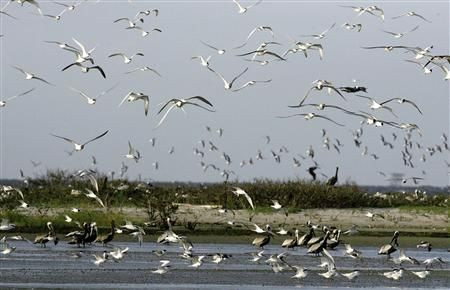Gulf 'Dead Zone' May Triple in Size, Researchers Say

The Gulf of Mexico's dead zone will probably expand in 2011 due to floodwaters flowing from the Mississippi River, Texas A&M oceanographers say.
Currently, the dead zone is twice the size of Rhode Island and Delaware combined, about 3,300 square kilometers, and it's located off southeastern Louisiana and Mississippi where there is a low oxygen level, which typically results in die-offs of marine life.
Texas A&M researchers believe the dead zone most likely will continue to grow in 2011 and become one of the largest ever, due to the record amount of water being deposited into the Gulf from the Mississippi Rver.
Researchers have continually monitored the dead zone off the coast of Louisiana during the past 25 years, and previous research has shown that nitrogen levels in the Gulf of Mexico intrinsically related to human activities have risen by 3 times over the past 50 years.
What's more, during the past five years, the dead zone has averaged about 5,800 square miles and has been predicted to exceed 9,400 square miles this year, which would make it one of the largest ever recorded, according to the Louisiana Universities Marine Consortium.
This was the first-ever research cruise conducted to specifically target the size of hypoxia in the month of June, said Texas A&M Oceanography Professor Steve DiMarco, one of the nation's authorities on the dead zone. We found three distinct hypoxic areas. One was near the Barataria and Terrebonne region off the Louisiana coast, the second was south of Marsh Island (also Louisiana) and the third was off the Galveston coast. We found no hypoxia in the 10 stations we visited east of the Mississippi delta.
The Mississippi is the largest river in the United States, draining 40 percent of the land area of the country. It also accounts for almost 90 percent of the freshwater runoff into the Gulf of Mexico.
DeMarco and his research colleagues will return to the Gulf area on August 8 to revisit many of the same locations to collect additional data.
© Copyright IBTimes 2024. All rights reserved.





















